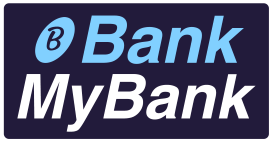Account numbers: What Are They?
A unique set of digits, letters, and occasionally other symbols known as an account number is used to identify the account’s owner and authorize access. Up until it had to be abandoned due to identity theft, the Social Security number served as the main form of identification in the United States. Many people’s checking account number is their most significant account number in the electronic age.
POINTS TO NOTE
A unique account number identifies the provider of a service and grants access to it.
An account number accompanies virtually every transaction that somebody conducts.
Account numbers are susceptible to fraud in the modern electronic world.
Identification numbers and passwords are protected by multi-factor authentication and other security procedures.
Your account number is located at the bottom of a paper check, right after the routing number.
Read More: How should your first credit card be chosen?
How an Account Number Works
The bottom of the paper check bears the checking account number. At the bottom of the check, you’ll find three groups of numbers in a computer-readable font:
- The nine-digit bank routing number is the first number to the left.
- Your account number is the middle number.
- The check number is the third number.
Checking account numbers are used by payroll processing agencies to set up direct deposit payments for employees.
Account numbers are associated with virtually every transaction a customer or corporation can make, in addition to checks. They can be found on purchase invoices, subscription services, credit card accounts, and store loyalty programs.
Keeping Account Numbers Safe
Passwords and identification numbers are both susceptible to fraud and identity theft. This is why, whenever we want to make ordinary modifications to an account, we are compelled to provide irksome information regarding the maiden names of our mothers. Password managers and multi-factor authentication systems are currently being used to make it more difficult for hackers to gain account details.
An electronic vault containing client account numbers and other sensitive information is frequently unlocked by a master password that is difficult to crack. The practice of multifactor authentication, which requires an additional step before gaining access to an account and may include a fingerprint scan, voice activation, or the delivery of a time-sensitive code to the registered cellphone number, is becoming more and more common among consumers.
The original purpose of this system, which dates back to 1910, was to assist bank clerks in sorting through stacks of checks and allocating them to the appropriate drawer. Modern electronic services employ them to withdraw a payment from a deposit at the right institution, much as wire transfers.
To identify the appropriate account holder at the appropriate institution, the account number functions in conjunction with the routing number.
Account Number versus Routing Number
The nine-digit routing number identifies particular banking institutions in the United States on paper checks. The check can be identified by its number as being from a bank with a federal or state charter that has an account with the Federal Reserve.
This approach was initially created in 1910 to assist bank clerks in sorting through stacks of checks and allocating them to the appropriate drawer. To draw a payment from a deposit at the right institution, electronic services use them nowadays in a manner that is quite similar to wire transfers.
The account number and routing number work together to pinpoint the correct account holder at the correct institution.
The Account Number on a Check: Where Can You Find It?
Your bank account number is printed at the bottom of your paper check, which you can find there. Between the more extended check number and the shorter nine-digit routing number, there is a second set of numbers printed. You can also find this number on the statement for your account.
Read More: IPL 2022: Five Uncapped hitters to Keep an Eye On
A bank account number’s length is how long?
A bank account number typically has eight to twelve digits, although may have as many as seventeen. Remember that this is not the same as the debit or credit card numbers you use every day.
Where Can I Find My Account Number?
Your bank account number is printed at the bottom of paper checks, on your bank statements, and the bank’s website. You might try going in person to a branch if you can’t find either kind of document online.
conclusion
Each account you have with a bank or other financial organization has a unique identification number. This number is utilized to make payments and deposits along with the routing number. Protecting your account number and other banking details is crucial due to the rise in identity theft and fraud.





